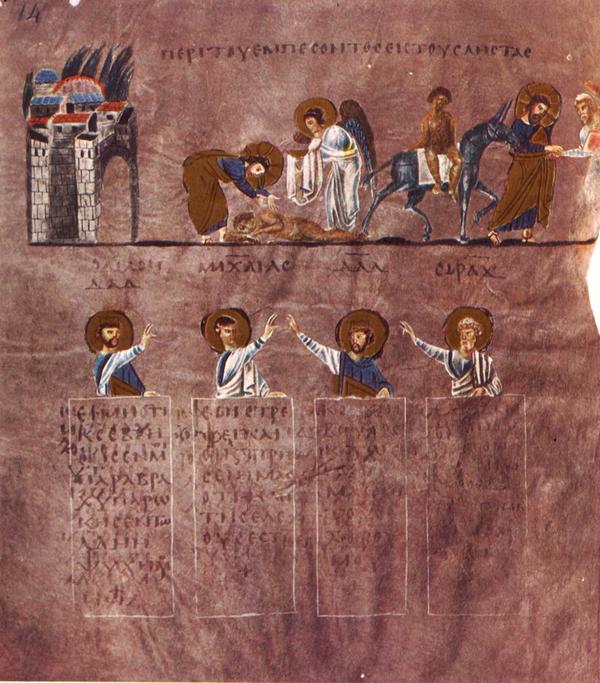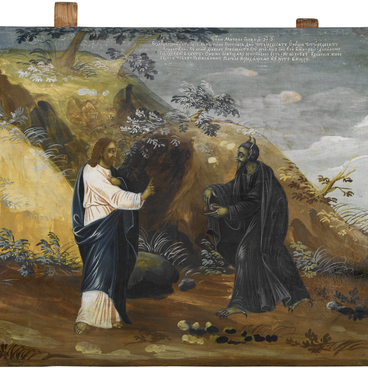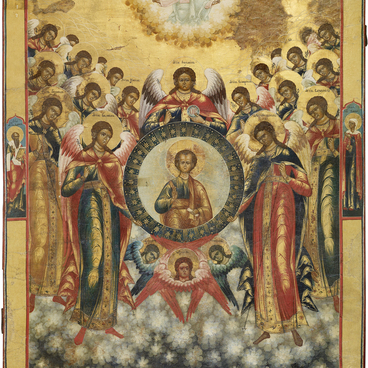The parable of the good Samaritan is one of the famous edifying stories presented in the Gospel. According to legend, one Jew went from Jerusalem to Jericho. Robbers attacked him on the way, beat him and took off his clothes. A priest and a Jew Levite passed by the wounded man, and neither of them even tried to help. The Samaritan, on the contrary, stopped, washed the wounds of the victim, put him on his donkey, took him to the hotel and rented lodgings for the traveller with his own money.
The Parable of the Good Samaritan
Время создания
Last quarter of the 18th century (circa 1778)
Размер
47,6x62,1 cm
Техника
Wood, tempera
Коллекция
Выставка
3
Открыть в приложении#1
Unknown Author
The Parable of the Good Samaritan
#2
#3
Miniature from the manuscript The Rossano Gospels
Source: wikipedia.org
Jews did not consider Samaritans as fellow believers, and Jesus told this parable to show who is really a neighbour: someone related by blood or someone who is ready to help. One of the first illustrations for the parable was discovered in the Rossano Gospels, a 6th-century Greek manuscript.
#4
The icon from the collection of the Rybinsk Museum Reserve was created in the last quarter of the 18th century in the town of Mologa, which was in close proximity to Rybinsk. Masters painted six baroque icons for the local Church of the Exaltation of the Holy Cross. The names of the icon painters were not preserved. Their works were somewhat different in painting style and palette: some icons remind Western European painting with three-dimensional figures and one-point perspective, others are based on the principles of ancient Russian art and have only individual baroque features – a bright palette and decorativeness. The Parable of the Good Samaritan belongs to the second group.
For the base, the icon painters used wooden panels fastened together. In order to prevent them from deforming, two narrow planks were inserted in the back. The base was polished, covered with a thin cloth – pavoloka and several layers of levkas. The image was executed with tempera paints. They were made from powdered pigments diluted in egg yolk.
#5
The icons, including the Parable of the Good Samaritan, were painted on panels of a horizontal format. They were installed in a single narrow tier of the iconostasis, probably in one of the lower ones where they usually placed scenes from the Gospel parables. The images from the Exaltation of the Holy Cross Church have one more peculiarity — they are painted without polya (raised flat borders of the icon panel).
#6
Before the revolution, the icon was kept in the Mologa church, and after – in the Mologa Museum of Local Lore. When the Rybinsk Reservoir was being designed, Mologa turned out to be in the future water area of the new reservoir. Therefore, in 1936, before the construction of the dam, the collection was transferred to the Rybinsk Museum.
#7
Rybinsk Museum Reserve
читать дальшескрыть
00:00
00:00
1x
The Parable of the Good Samaritan
Время создания
Last quarter of the 18th century (circa 1778)
Размер
47,6x62,1 cm
Техника
Wood, tempera
Коллекция
Выставка
3
Открыть в приложении
Поделиться


